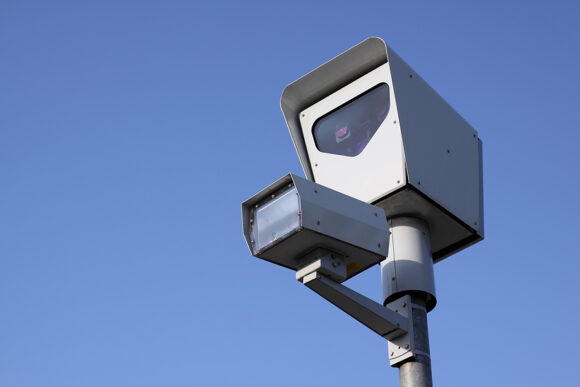Speed cameras rank among the most cost-effective social policies, saving both money and lives according to research conducted at Columbia Mailman School of Public Health. Using the 140 speed cameras in New York City as a case study, researchers analyzed how to optimize the number of cameras such that the most lives can be saved at the lowest cost. They reported that doubling the number of cameras from 140 to 300 would save $1.2 billion while improving the quality and the duration of New Yorkers’ lives. The findings are published online in the BMJ journal Injury Research.
“There are an optimal number of speed cameras, above which the return-on-investment diminishes. In New York City, the optimal number is more than double the current number in use,” said Peter Muennig, MD, professor of Health Policy and Management at Columbia Mailman School.
Over the lifetime of an average New York City resident, the existing 140 speed cameras reduced costs by an average $70 compared with no speed cameras. Increasing the number of cameras to 300 would further reduce medical costs by $147 per person. As a whole, New Yorkers would gain 7,000 quality-adjusted life years, a measure of disease burden, including both the quality and the quantity of life lived.
“As with vaccines, there are declining returns on the investment as more cameras are installed. That is, there is a ‘herd immunity’ effect with speed cameras in which an optimal number will produce a very low accident rate, and only minuscule gains can be achieved with additional investments,” says Muennig, senior author.
Muennig and colleagues built a computer model to explore the economic and health impacts of speed camera installations in New York City as well as the optimal number and placement. Both direct and indirect medical savings associated with speed cameras were weighed against their cost.
The researchers modeled three scenarios: one with no cameras installed (the previous status quo), one with the existing network of cameras (the current status quo), and one with a hypothetical scenario in which more cameras are placed in precise locations that would, in theory, maximize the return on investment. The aim is to give policymakers a sense of whether, setting aside political concerns, it is efficient to expand, or perhaps reposition, existing networks of speed cameras.
Speed cameras have become one of the most widely used tools in wealthier nations to prevent motor vehicle collisions. Studies have shown that driver behavior improves and motor vehicle collisions fall at locations near speed cameras. The effect size depends on the type of camera, the distance from the camera location and local setting characteristics. For example, fixed cameras appear to be more effective in rural settings while both fixed cameras and mobile cameras produce similar reductions in accidents in urban settings.
 The research by Muennig and colleagues coincided with city-wide protests by parents when New York State had the cameras removed from school zones. One week before the 2018 academic term began, parents won the battle and an agreement was reached among the New York City Council, Mayor di Blasio and Governor Cuomo to reinstate the cameras. The legislation allows the city to track and ticket drivers who exceed the posted limit in school zones. Currently New York CIty has 140 speed cameras which can only be operated within approximately 1,300 feet from schools and during school time.
The research by Muennig and colleagues coincided with city-wide protests by parents when New York State had the cameras removed from school zones. One week before the 2018 academic term began, parents won the battle and an agreement was reached among the New York City Council, Mayor di Blasio and Governor Cuomo to reinstate the cameras. The legislation allows the city to track and ticket drivers who exceed the posted limit in school zones. Currently New York CIty has 140 speed cameras which can only be operated within approximately 1,300 feet from schools and during school time.
“Our research suggests that speed cameras should be added to the arsenal that public health practitioners have for improving population health,” observed Muennig. “While we use New York City as a case study, our analysis likely underestimates the benefits that would be realized in other locales because we add a good deal of latitude for the cost savings and health benefits. Thus, when used in moderation and in politically palatable ways, they can both save money and lives—a feat rarely accomplished in health.”
Co-authors include Shukai Li, Boshen Jiao, and Zafar Zafari, Columbia Mailman School. The study was funded by Columbia’s Global Research Analytics for Population Health.
Source: Columbia University Mailman School of Public Health
Was this article valuable?
Here are more articles you may enjoy.


 Poorer Americans Dropped Federal Flood Insurance When Rates Rose
Poorer Americans Dropped Federal Flood Insurance When Rates Rose  Waymo to Update Software Across Fleet After Major Power Failure
Waymo to Update Software Across Fleet After Major Power Failure  Wells Fargo Sued by Ex-Manager Who Said Bank Faked Diversity
Wells Fargo Sued by Ex-Manager Who Said Bank Faked Diversity  Rare Weather Warning Issued as Strong Gusts Fuel Colorado Wildfire Threats
Rare Weather Warning Issued as Strong Gusts Fuel Colorado Wildfire Threats 